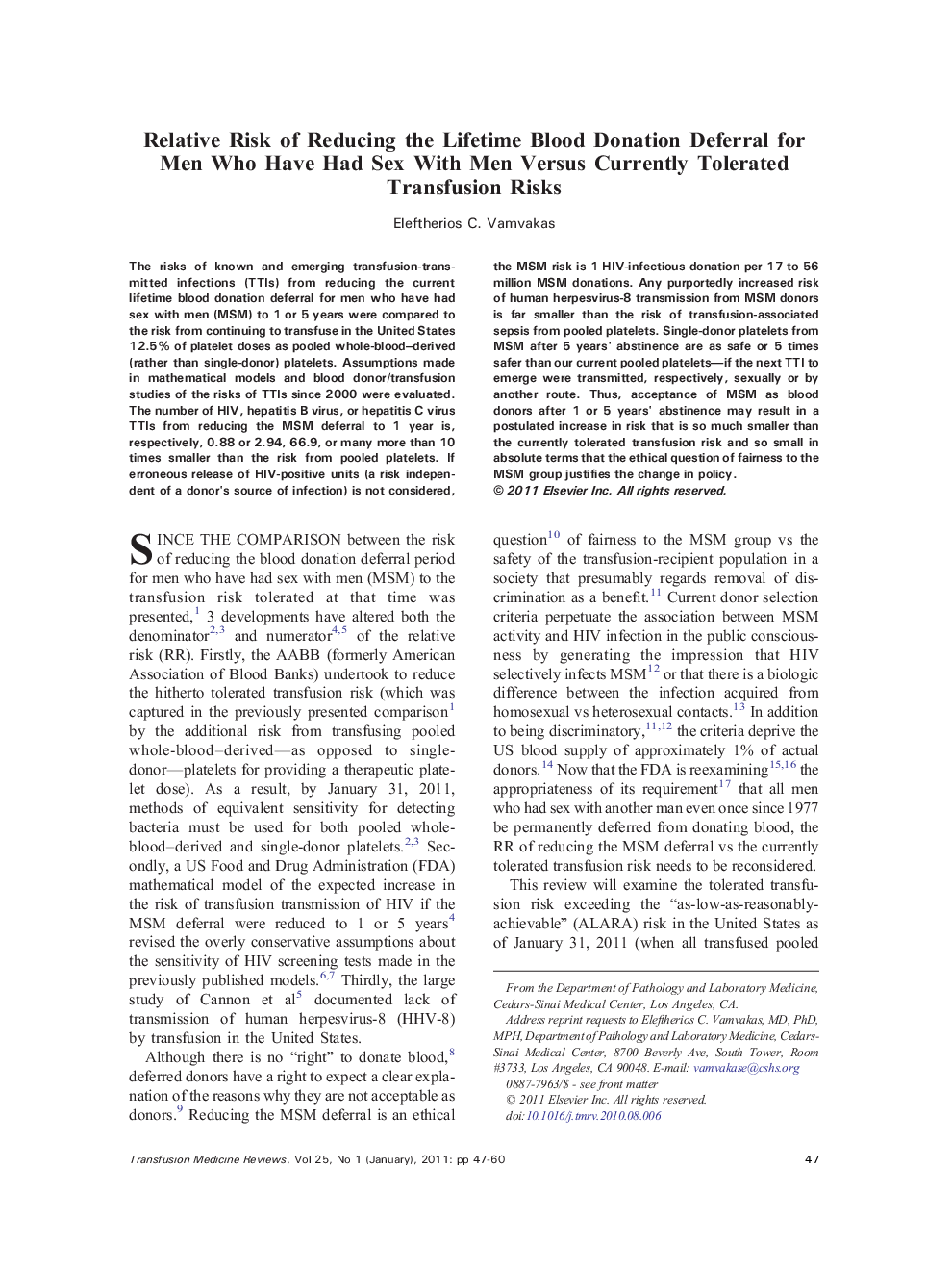| Article ID | Journal | Published Year | Pages | File Type |
|---|---|---|---|---|
| 3336933 | Transfusion Medicine Reviews | 2011 | 14 Pages |
The risks of known and emerging transfusion-transmitted infections (TTIs) from reducing the current lifetime blood donation deferral for men who have had sex with men (MSM) to 1 or 5 years were compared to the risk from continuing to transfuse in the United States 12.5% of platelet doses as pooled whole-blood–derived (rather than single-donor) platelets. Assumptions made in mathematical models and blood donor/transfusion studies of the risks of TTIs since 2000 were evaluated. The number of HIV, hepatitis B virus, or hepatitis C virus TTIs from reducing the MSM deferral to 1 year is, respectively, 0.88 or 2.94, 66.9, or many more than 10 times smaller than the risk from pooled platelets. If erroneous release of HIV-positive units (a risk independent of a donor's source of infection) is not considered, the MSM risk is 1 HIV-infectious donation per 17 to 56 million MSM donations. Any purportedly increased risk of human herpesvirus-8 transmission from MSM donors is far smaller than the risk of transfusion-associated sepsis from pooled platelets. Single-donor platelets from MSM after 5 years' abstinence are as safe or 5 times safer than our current pooled platelets—if the next TTI to emerge were transmitted, respectively, sexually or by another route. Thus, acceptance of MSM as blood donors after 1 or 5 years' abstinence may result in a postulated increase in risk that is so much smaller than the currently tolerated transfusion risk and so small in absolute terms that the ethical question of fairness to the MSM group justifies the change in policy.
